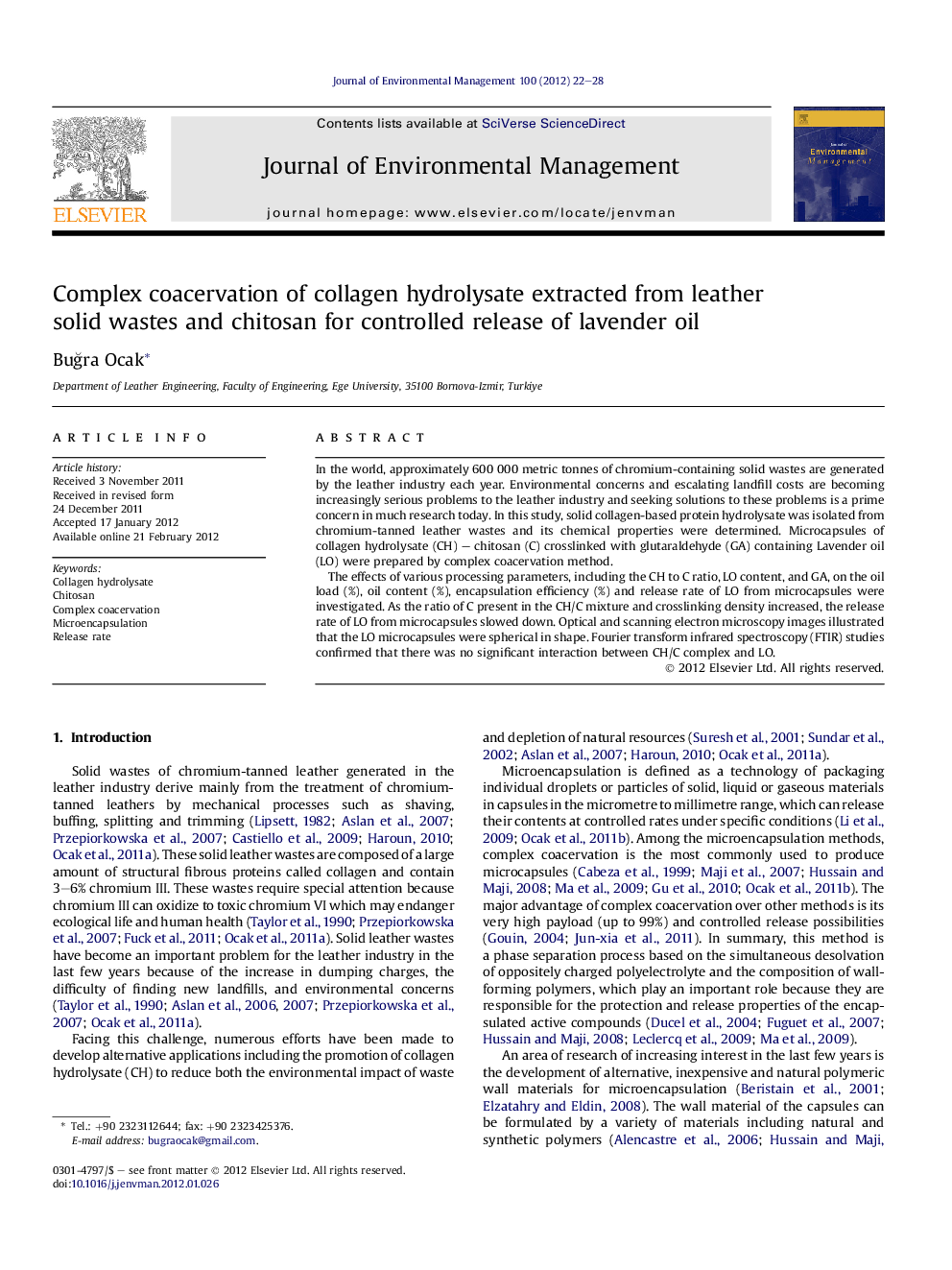| Article ID | Journal | Published Year | Pages | File Type |
|---|---|---|---|---|
| 1056748 | Journal of Environmental Management | 2012 | 7 Pages |
In the world, approximately 600 000 metric tonnes of chromium-containing solid wastes are generated by the leather industry each year. Environmental concerns and escalating landfill costs are becoming increasingly serious problems to the leather industry and seeking solutions to these problems is a prime concern in much research today. In this study, solid collagen-based protein hydrolysate was isolated from chromium-tanned leather wastes and its chemical properties were determined. Microcapsules of collagen hydrolysate (CH) – chitosan (C) crosslinked with glutaraldehyde (GA) containing Lavender oil (LO) were prepared by complex coacervation method.The effects of various processing parameters, including the CH to C ratio, LO content, and GA, on the oil load (%), oil content (%), encapsulation efficiency (%) and release rate of LO from microcapsules were investigated. As the ratio of C present in the CH/C mixture and crosslinking density increased, the release rate of LO from microcapsules slowed down. Optical and scanning electron microscopy images illustrated that the LO microcapsules were spherical in shape. Fourier transform infrared spectroscopy (FTIR) studies confirmed that there was no significant interaction between CH/C complex and LO.
► Collagen-based protein hydrolysate was isolated from chromium-tanned leather wastes. ► Collagen hydrolysate was used as a wall material with chitosan in microencapsulation. ► Collagen hydrolysate-chitosan microcapsules were successfully prepared. ► Reutilization of collagen hydrolysate in encapsulation appears feasible and promising.
